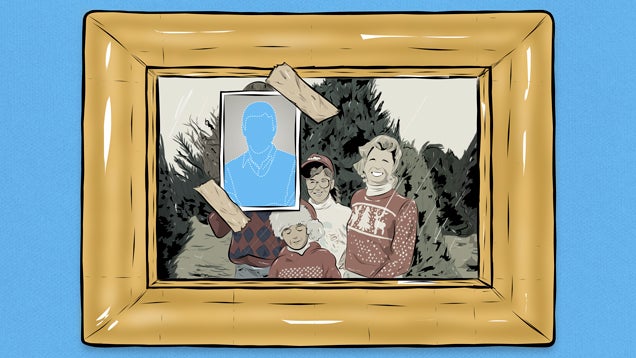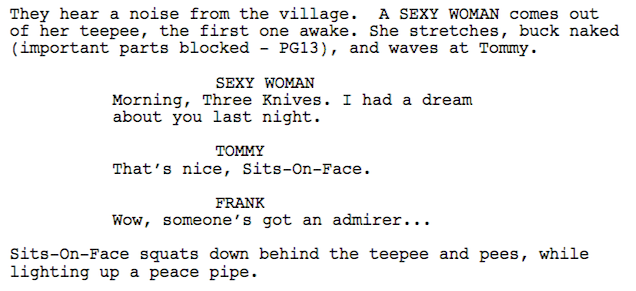![How To Deal When Your Widowed Parent Starts Dating Again]()
I never thought I would ever say this in my lifetime, but my mom has a new boyfriend. Sure, for now, she refers to him as her “friend,” but I know a date when I see one. My mom has a boyfriend. It’s new territory for me, and frankly, it’s terrifying. But it’s going to be okay.
It’s funny to experience things you think you’ve gotten far enough in life to avoid completely. My parents were married for 43 years. They loved each other very much. Their relationship was stable, and it set an amazing, aspirational example for my brother and sister and me. Then my dad died last summer, and my concept of what I thought life was like changed completely. I have written about my grief publicly and often, sometimes on this very website. But this is about moving on, something that is a very different process for everyone. I’ve come to learn that when a parent feels comfortable (or strong) enough to date again, that’s when you know it’s time to move on. I’m ready. I guess my mom is, too.
So she met someone new. A man who is very much not my father, something I both know and have been told many times in recent months. People have this pervasive need to tell you that. I don’t know why. They’re right. He’s not my father. I know that. Which doesn’t mean that I haven’t yelled, “You’re not my real dad!” into the ether—you know, just to get all the awkward jokes out of my system. Joking, sometimes without regard for taste or tact, has been an important part of how I cope. In any case, my point here is that people are going to tell you things you don’t want to hear, and eventually (though maybe after some resistance), you’ll go ahead and realize them on your own. The concept of my mom dating or another man being around never sounded so bad in vague terms, ones that I never thought would actualize. Then it became a real thing.
There’s some irony here. Some months ago, I was giving my mother advice on how to turn someone down. That felt fine, if a little bit surreal; it was amusing and sweet, even. She missed my dad so much, and it felt like a fun distraction. I treated her like a friend, figuring that she’s a good-looking woman, and not that old, and eventually, she’ll want to date. Eventually, though, like in five years—or, better yet, a decade from now. But these things aren’t the sort you can pop on the calendar and plan ahead for. I understood that when my mom would be ready to date again was out of my hands, and it’s been an important part of the process. You may have a loose timeline for how you’d like your own life to play out, but it hardly ever works out exactly as planned, right? Never mind trying to figure someone else into your Big Life Plan—especially when that person is your smart, strong-willed, and beautiful mother. She created you. You can’t control her. (The same goes for fathers, of course.)
I understood these things about my mother and, in theory, supported all the hypotheticals that followed. But there is a difference between understanding something in theory, and handling it in reality. A big difference.
When my mother told me, delicately and respectfully, that she was seeing someone, I surprised myself when I lost connection to mission control completely. I flipped. If my life were the movie Gravity, I would be George Clooney, a corpse farting off in space somewhere near the Hubble Telescope. That’s how much I lost it.
Losing it is part of the process, by the way. Losing it is okay. I don’t have a degree in this or anything. I’m learning by living it all, but it was actually a relief to let all that steam off; sometimes you have to feel like shit to feel better. I feel fine now, for the most part. But it’s taken some time, and coping is an esoteric, nonlinear process.
So here’s how this whole thing went down. In January, my mom told me she was spending time with someone. I think that was her very delicate way of saying she had gone on a few dates with another human man. That was fine. I spend time with other people all the time, but it doesn’t always mean something. (In retrospect, I wish she’d been more blunt, but I also don’t think she knew what she was getting into.) What I should have realized then, however, is that our parents are a lot older than us. They don’t have the luxury of time that youth affords. While dating takes a lot of different forms for someone in the twenties (like me), your parents aren’t necessarily working on the same timeline. Their definition of dating is probably different and probably a lot less casual.
I didn’t get that at first. So a month later, when she told me again that she had “spent time” with this man, it knocked me on the ground a little bit. She was very open about her situation, and recognized that the timing might be tough for me, but it still hit me right square in the chest. I was not able to push the wind back into my sails so quickly, and I said some terrible things to my mother. “Dad’s dead, but he’s not that dead,” for example. I’m not proud. (Bless her that given my extensive and well-documented history of freak-outs, she somehow still loves me.) It might sound corny, but knowing your parents love you is key while dealing with this; that fact transcends all else and should stay at the forefront of your brain at all times.
Have compassion yourself. To her credit, my mother is very understanding. She constantly asks me to tell her my concerns. My concern is that she’s going to sell the house I grew up in. Then I realize she’s had to live in the house she shared with my dad for 33 years, alone. Of course she’d want companionship. Another concern is I’m 27, and I don’t want to go through some Brady Bunch thing with another family of adults. Then I realize, hey, that might be kind of cool. Processing happens over time; you just have to be open to it.
It might feel super obvious, but oddly enough, sometimes obvious things need to be said the most. Of course she loves you, but it helps to be reminded. The not-so-obvious things are important, too. The fact that my mother can be out there looking for a new relationship should be a testament to the one she had with my father. She’s willing to put herself through the wringer again if there is the chance to find something special.
Take it slow yourself. Ask questions. Asking questions is key. My first instinct was to act like this man didn’t exist. I didn’t want to know who the guy was or what his story was, and I definitely did not want to meet him. I thought that would make it easier. (What I didn’t know couldn’t hurt me.) I was wrong. Boy, was I wrong.
There’s a little thing called humility that will work wonders for you as you get to know a parent’s new dating interest. The guy my mom is seeing? He also lost his spouse unexpectedly last year. And they were also married for a very long time. He has kids, too! Four of them. He also has grandkids! He and my mom have a lot in common, and knowing that was comforting. I can relate in that I have forged a handful of deep and meaningful relationships over the past nine months with people who have also lost their parents. It may seem like an odd thing to bond over—pretty morbid, too—but it’s a great thing to know that you aren’t going through this alone. So I can translate that to feeling comforted that my mom is not alone, even if this relationship fizzles out at some point. Don’t let fear be a thing that holds you back.
Know that there’s really no roadmap to navigating this situation. In many ways, the past 10 months or so of my life have felt like a never-ending trial by fire. But I have found that wading through the suck swamp of real-life events and uncomfortable milestones is easier if you approach it with an open heart. Don’t be hard on yourself. Give yourself time! Give yourself space! Talk to people. Look for friends who have been through a similar situation to you, or have ways in which they can relate. Talk to your relatives. I called up my 90-year-old grandmother, who also lost her own husband (my mother’s father) when she was around my mom’s age. “What do you want her to do, honey?” she asked me. “Sit inside her house for the rest of her life?” No way. I needed to hear it from someone else though.
Remember you are not alone! The types of people who relate are out there. This is something I know to be true. It’s okay to not be okay immediately. You’re not going to be okay immediately. I cannot speak for my siblings, other than to say we have dealt with our respective carry-on bags of grief in very different ways. We have also dealt with our mom’s new life in very different ways. That’s also an okay thing.
Things are good between my mom and me. I met her man-friend over Easter weekend when I was home in Texas. This particular line from Tommy Boy comes to mind when I say, “Ooh, he seems like a nice guy,” but he truly seems like a nice guy. In some way, his presence in my mother’s life has lifted her spirits, and that’s a good thing. I understand why it’s been hard for me, too. When you strip all of the details away, his existence underscores the fact that my father is permanently gone. It reopens the wound. But that wound is going to heal, save for some scarring.
This man is nothing like my dad. I mean that as a positive. No one could be. But to be able to say these things, I had to navigate my way through a whole ocean of emotions I had never felt, which was a scary thing. But ultimately, a good thing! For both my mom and me.
Art by Sam Woolley.
Adequate Man is Deadspin’s new self-improvement blog, dedicated to making you just good enough at everything. Suggestions for future topics are welcome below.




































